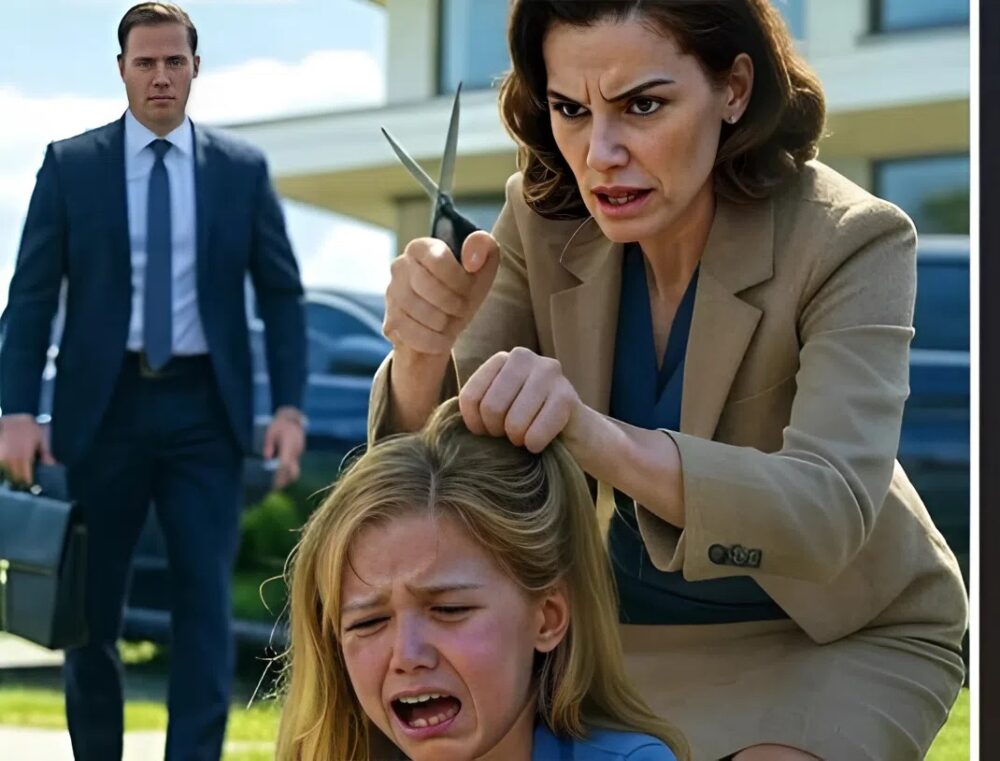The story of the Carter family is a stark reminder that abuse can hide in plain sight, even in the most affluent homes. Jonathan Carter, a wealthy real estate developer, was blind to the suffering of his six-year-old daughter, Sophie. While he saw a picture-perfect family, his daughter was living a nightmare of control and cruelty at the hands of her stepmother, Claudia. Sophie’s quiet obedience and her rote answer of “yes” to her father’s nightly question were not signs of contentment, but survival tactics of a child trapped in an abusive environment.
The breaking point came with a desperate, public plea: “Please, don’t cut my hair, Mom!” This was not a simple childhood tantrum. Forcing a child into a humiliating physical alteration like a haircut is a common tactic of abuse, designed to strip away identity and assert dominance. Jonathan’s chance arrival home in time to witness this act was the crucial intervention that finally ripped away the veil, forcing him to see the reality he had missed.
This moment underscores a critical lesson for all parents and caregivers: we must look beyond the surface and trust our instincts. Jonathan had likely dismissed small signs—a flinch, a withdrawn demeanor, a too-quick reassurance—as minor behavioral issues. It took witnessing an overt act of cruelty to understand the cumulative weight of those subtle signals. His immediate action to remove Claudia from the home was the first and most vital step in protecting his child.
The legal aftermath revealed the calculated nature of the abuse, with discovered evidence showing deliberate efforts to conceal the mistreatment. For Jonathan and Sophie, the path to recovery required rebuilding a foundation of safety and trust. Jonathan’s commitment to learning how to care for his daughter’s hair, a direct response to the traumatic event, became a powerful symbol of his dedication to her healing and autonomy.
Sophie’s hesitant question, “Do you believe me now, Daddy?” weeks into their recovery, highlights the deep-seated need for validation in abused children. Jonathan’s unwavering response, “I’ll always have faith in you,” was more than an answer; it was a therapeutic promise. Their story is a powerful call to action for all adults to listen more intently, observe more carefully, and always be a child’s unwavering advocate.


